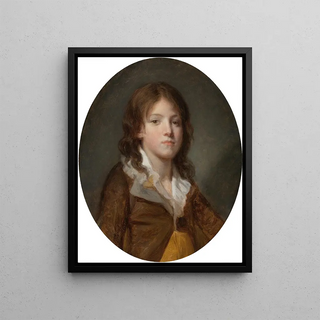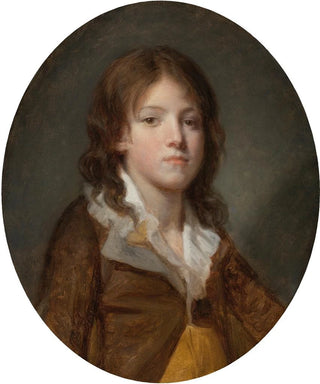Art print | Portrait of a boy sometimes presumed to represent Louis-Charles, Duke of Normandy, Dauphin of France - Jean-Baptiste Greuze


View from behind

Frame (optional)
In the vast panorama of art history, some works manage to capture the very essence of their era while transcending the limits of time. The "Portrait of a Boy Sometimes Presumed to Represent Louis-Charles, Duke of Normandy, Dauphin of France" by Jean-Baptiste Greuze is one of these creations. This painting, imbued with extraordinary delicacy, invites us to immerse ourselves in a universe where childhood innocence blends with royal majesty. Through the sparkling gaze of this young boy, the artist succeeds in evoking a multitude of emotions, ranging from tenderness to melancholy. This portrait, beyond its historical significance, is a true window into the soul of a child whose destiny was already sealed by the grandeur of his lineage.
Style and uniqueness of the work
Greuze's style is characterized by a finesse and sensitivity that are uniquely his own. In this portrait, he manages to combine realism with a certain idealization of his subject. The boy's features are delicately modeled, revealing a softness that contrasts with the rigour of his potential status. The colors, carefully chosen, create an atmosphere that is both warm and intimate. The play of light and shadow is skillfully orchestrated, giving the boy's face an almost lifelike dimension. Every detail, from the fold of his clothing to the sparkle in his eyes, seems to tell a story— that of a child who is both ordinary and exceptional. The work fits within a tradition where the portrait becomes not only a reflection of reality but also an exploration of human emotions, a characteristic trait of Greuze's style.
The artist and his influence
Jean-Baptiste Greuze, an emblematic figure of the 18th century, distinguished himself by his ability to depict everyday life while incorporating elements of high society. His work is part of a movement that values sensitivity and emotion, in opposition to the rigid classicism of his predecessors. Greuze, through his approach, paved the way for a new way

Matte finish

View from behind

Frame (optional)
In the vast panorama of art history, some works manage to capture the very essence of their era while transcending the limits of time. The "Portrait of a Boy Sometimes Presumed to Represent Louis-Charles, Duke of Normandy, Dauphin of France" by Jean-Baptiste Greuze is one of these creations. This painting, imbued with extraordinary delicacy, invites us to immerse ourselves in a universe where childhood innocence blends with royal majesty. Through the sparkling gaze of this young boy, the artist succeeds in evoking a multitude of emotions, ranging from tenderness to melancholy. This portrait, beyond its historical significance, is a true window into the soul of a child whose destiny was already sealed by the grandeur of his lineage.
Style and uniqueness of the work
Greuze's style is characterized by a finesse and sensitivity that are uniquely his own. In this portrait, he manages to combine realism with a certain idealization of his subject. The boy's features are delicately modeled, revealing a softness that contrasts with the rigour of his potential status. The colors, carefully chosen, create an atmosphere that is both warm and intimate. The play of light and shadow is skillfully orchestrated, giving the boy's face an almost lifelike dimension. Every detail, from the fold of his clothing to the sparkle in his eyes, seems to tell a story— that of a child who is both ordinary and exceptional. The work fits within a tradition where the portrait becomes not only a reflection of reality but also an exploration of human emotions, a characteristic trait of Greuze's style.
The artist and his influence
Jean-Baptiste Greuze, an emblematic figure of the 18th century, distinguished himself by his ability to depict everyday life while incorporating elements of high society. His work is part of a movement that values sensitivity and emotion, in opposition to the rigid classicism of his predecessors. Greuze, through his approach, paved the way for a new way






